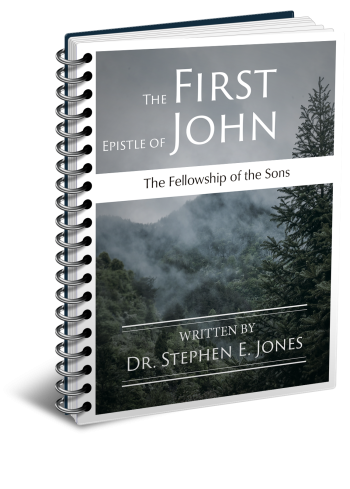Latest Posts
View the latest posts in an easy-to-read list format, with filtering options.

An in-depth commentary of the first epistle of John in the Bible.
Category - Bible Commentaries

1 John 3:3 says,
3 And everyone who has this hope fixed on Him purifies himself, just as He is pure.
Conversely, verse 4 says,
4 Everyone who practices sin also practices lawlessness; and sin is lawlessness [anomia].
John says that “this hope” is the motive for purification among the children of God. It is the “hope” that “when He appears, we shall be like Him.” The children’s hope, then, is to reflect the image of God. Paul defines hope in Rom. 8:23-25, saying,
23 And not only this, but also we ourselves, having the first fruits of the Spirit, even we ourselves groan within ourselves, waiting eagerly for our adoption as sons, the redemption of our body. 24 For in hope we have been saved, but hope that is seen is not hope; for why does one also hope for what he sees? 25 But if we hope for what we do not see, with perseverance we wait eagerly for it.
Hope is not wishful thinking. Hope is an expectation of something that will surely come later. By definition, hope involves anticipation of something that is yet to be experienced at the end of one’s journey. In fact, it is the reason for the journey. When Israel was yet wandering in the wilderness, their hope was the Promised Land. In our own journey, our hope is to come into the image of God—the real Promise of God.
In fact, Paul said in Rom. 8:19-21 that the entire creation is waiting for the sons of God to be revealed (apokalupsis, “unveiled”). When the sons of God truly appropriate the New Covenant, they will be fully unveiled and the glory of God will be seen in them. All of creation anxiously awaits this event, for they too have a stake in this outcome. God is not merely saving the overcomers. The sons of God are first fruits of a great harvest bringing the entire creation back to God!
So Paul tells us in Rom. 8:20 that the creation was subjected to futility…
20 … not of its own will, but because of Him who subjected it in hope 21 that the creation itself also will be set free from its slavery to corruption into the freedom of the glory of the children of God.
Hence, not only do the children of God have “hope,” but the entire creation also has the same hope. The difference is that the hope of the children of God will be satisfied prior to that of the creation as a whole.
The creation was subjected to futility apart from its own will, Paul says in verse 20. So also, the creation will be restored apart from its own will. This restoration is based on the New Covenant, where God Himself took the initiative and made Himself responsible by oath to make it happen. Creation could never achieve this on its own or by its own will through the Old Covenant. Only through the New Covenant could the creation have any hope at all.
So also the children of God must appropriate the New Covenant in order to achieve their hope of coming into the image of God.
The laws of purification under Moses have been modified under Christ. Whereas under Moses, purification was by water or blood, under Christ we are purified by the word of God. The water was only a type and shadow of the word.
So Jesus told His disciples in John 15:3, “You are already clean because of the word which I have spoken to you.” The blood of animals was a type and shadow representing the blood of Jesus (1 John 1:7). Hence, the laws of purification were not put away, but modified and elevated to a more effective level.
Heb. 9:13, 14 also distinguishes between Old Covenant purification and New Covenant purification. Nonetheless, the basic laws of purification, though modified, are still relevant today. God did not put away any part of His law. Those who teach antinomianism are “lawless” (anomia), as John writes. Those who have this hope are purifying themselves. Those who do not have this hope—or those who only think that they have this hope—are lawless.
So one of the characteristics of fellowship is purification from all lawless beliefs and actions.